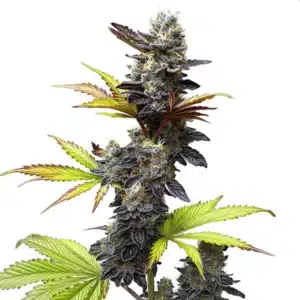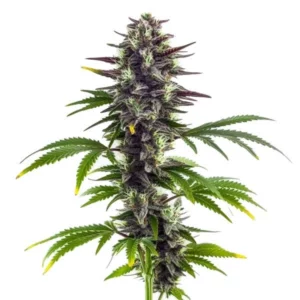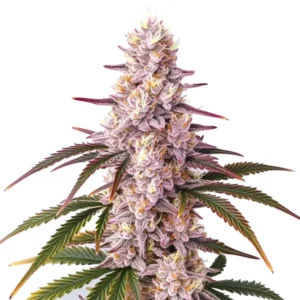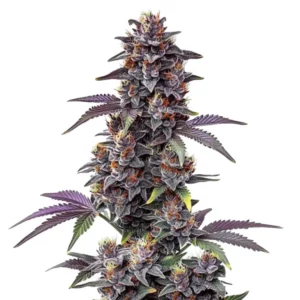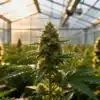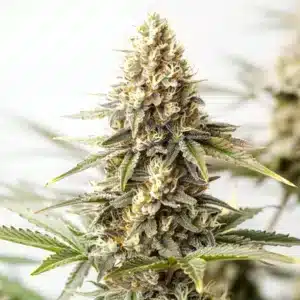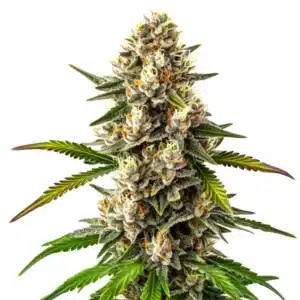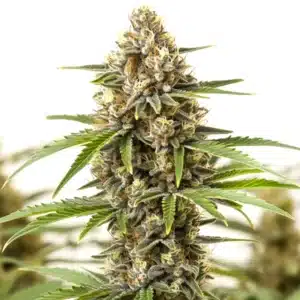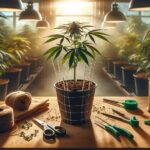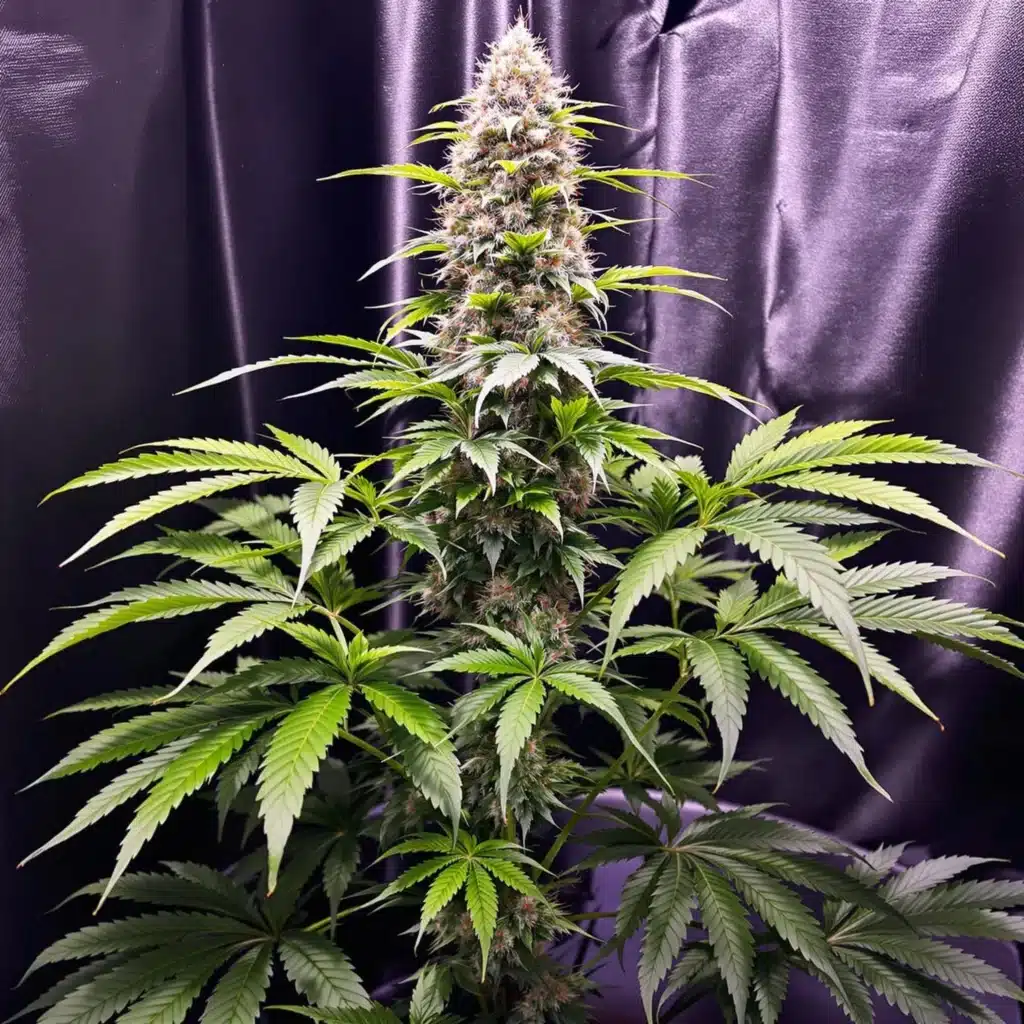
Before and After Low Stress Training: Transforming Cannabis Growth
What Is Low Stress Training (LST)?
Low Stress Training (LST) is a cannabis cultivation technique designed to maximize yields and improve plant health by gently bending and securing branches. This method helps create an even canopy, allowing light to reach all parts of the plant equally. The result is a healthier plant with more bud sites and enhanced overall growth. LST is particularly effective for indoor grows, where optimizing space and light penetration is crucial. Additionally, it allows growers to cultivate in limited spaces while still achieving impressive results. The technique is versatile and can be adapted to various plant types and growth setups.
Before LST, cannabis plants often grow vertically, which can lead to uneven light distribution. Tall central colas overshadow lower branches, limiting their potential. This traditional growth pattern can also make the plants more susceptible to mold and mildew due to restricted airflow. After LST, the plant’s structure becomes more horizontal, ensuring every bud site gets sufficient light and airflow. This transformation improves yields, increases resin production, and minimizes risks associated with poor ventilation.
Recommended Strains
Permanent Marker
|
|
THC | 32% - 34% (High) |
|
|
Type | Feminized |
|
|
Yield | High |
|
|
Phenotype | 50% Indica / 50% Sativa |
Permanent Marker Auto
|
|
THC | 32% - 34% (High) |
|
|
Type | Autoflowering |
|
|
Yield | Medium |
|
|
Phenotype | 50% Indica / 50% Sativa |
Promos & Deals
Why Use LST on Cannabis Plants?
Maximizing Light Distribution
Before LST, light primarily hits the top of the plant, leaving lower branches underdeveloped. This inefficiency can limit your harvest and lead to uneven growth. After LST, the even canopy ensures that every bud site receives adequate light, boosting growth and resin production. This not only maximizes the plant’s potential but also improves the overall quality of the buds, resulting in more consistent cannabinoid and terpene profiles.
Proper light distribution is particularly important for indoor grows where light sources are fixed. By training the plant to grow horizontally, growers can make the most of their lighting setup, ensuring all parts of the plant thrive equally. The uniform light exposure contributes to a healthier and more productive crop, allowing for optimal use of energy and resources.
Encouraging Multiple Bud Sites
Cannabis plants naturally focus energy on their main cola. By using LST to spread branches horizontally, you encourage the plant to develop multiple colas. This results in a larger harvest and better use of your growing space. More bud sites mean increased yields and a more balanced growth pattern, ensuring that the plant’s energy is distributed evenly.
The development of multiple bud sites also helps reduce the risk of top-heavy plants, which can become unstable as they mature. By creating a more balanced structure, LST minimizes the likelihood of branches snapping under the weight of heavy buds. This makes the technique particularly useful for high-yielding strains prone to producing dense flowers.
LST allows for better light penetration and airflow throughout the plant. By spreading the branches out, you expose more bud sites to direct light, which is crucial for maximizing photosynthesis and resin production. Improved airflow reduces the risk of mold and pest infestations, creating a healthier environment for your cannabis plants to thrive. This combination of benefits makes LST an essential technique for growers aiming to optimize both the quality and quantity of their harvest.
Before and After Low Stress Training: Key Differences
Plant Structure
Before LST, plants have a dominant central cola and a vertical growth pattern. This can lead to light inefficiency and lower yields, as the lower branches struggle to receive adequate light. The plant’s natural structure also limits airflow, increasing the risk of mold and pests. After LST, the plant’s structure becomes more open and horizontal, allowing light to penetrate deep into the canopy. This improved structure supports better airflow and reduces the chances of disease or infestations.
After training, the plant’s even canopy ensures that all bud sites receive sufficient light and nutrients. This balanced growth pattern encourages healthier plants and more robust flower development. The horizontal structure also makes it easier to manage the plant during its growth cycle, simplifying tasks like pruning and defoliation.
Yield Potential
Before LST, yield potential is limited by uneven light distribution and poor utilization of the plant’s energy. The lower branches often produce smaller, less potent buds, while the main cola receives the majority of resources. Post-LST, the increased light exposure to lower bud sites enhances flower development and overall yield. By creating multiple colas, LST ensures a more consistent and productive harvest.
Growers who use LST often report significant increases in yield compared to untrained plants. The technique allows for more efficient use of space and resources, making it an essential practice for both novice and experienced cultivators. With proper care and attention, LST can transform even a modest grow setup into a high-yield operation.
Post-LST Care for Cannabis Plants
How to Monitor Plant Recovery After LST
After applying LST, monitor your plants closely for signs of stress, such as drooping leaves or discoloration, and ensure they recover within 24-48 hours by adjusting care routines as needed. Regularly inspect and adjust ties or stakes to prevent them from cutting into stems as the plant grows, keeping them secure but not restrictive to encourage healthy development and avoid long-term damage.
Adjusting Light and Nutrients Post-LST
Once LST is complete, adjust your grow lights to ensure even coverage across the canopy. Lower the lights slightly to maximize light intensity without causing heat stress. Additionally, increase nutrient levels gradually to support the plant’s accelerated growth. A balanced feeding schedule is crucial for maintaining healthy plants during this phase.
Proper feeding schedules post-LST are essential. Focus on nitrogen-rich nutrients during the vegetative phase and transition to phosphorus and potassium during flowering to maximize bud development. Regularly test the soil or growing medium to ensure the plants are receiving the right nutrients in the appropriate amounts.
Identifying Signs of Stress After LST
Signs of stress include drooping leaves, slow growth, or brittle stems. These symptoms may indicate excessive bending or damage. If stress persists, reduce training intensity and allow the plant time to recover. Healthy plants will bounce back quickly and continue vigorous growth. Taking proactive steps to address stress early ensures the plant remains productive and resilient.
Promoting Growth After LST
Encouraging New Growth in Tied-Down Plants
Tying down branches redirects the plant’s energy to underdeveloped areas. This encourages new growth and the development of secondary colas. Regularly check the plant and retie branches to maintain an even canopy as it grows. Consistent monitoring and adjustments help maximize the benefits of LST and ensure optimal results.
New growth often appears within days of applying LST, as the plant redirects its energy to exposed bud sites. Encouraging this growth requires careful management of light, nutrients, and environmental conditions. Providing a stable and supportive environment allows the plant to thrive and reach its full potential.
Enhancing Bud Site Development Post-LST
An even canopy is crucial for achieving uniform light distribution across the plant, which enhances the growth of lower bud sites. When all parts of the plant receive adequate light, energy is distributed more evenly, promoting balanced development. Techniques like low-stress training (LST) and defoliation are highly effective for creating an even canopy:
- Defoliation involves removing excess leaves that block light from reaching lower branches. This improves light penetration, allowing secondary bud sites to thrive. However, it’s important not to overdo defoliation, as some leaves are necessary for photosynthesis and overall plant health.
- Combining LST with defoliation can further enhance bud production by opening up the plant’s structure and directing growth hormones to key areas. LST bends branches to expose more bud sites to light, while defoliation clears the path for optimal light penetration.
This integrated approach ensures that every part of the plant contributes to the final yield, resulting in larger, denser buds throughout the canopy.
Importance of Proper Airflow
In addition to managing the canopy, proper airflow is vital for supporting healthy bud site development and preventing common issues like mold and mildew. A well-ventilated growing environment helps:
- Reduce humidity around dense buds, minimizing the risk of bud rot and other fungal diseases.
- Strengthen stems and branches, enabling the plant to support the weight of larger buds.
- Improve CO₂ exchange, which is essential for photosynthesis and overall growth.
To achieve optimal airflow:
- Position oscillating fans to circulate air evenly around the grow space, ensuring no stagnant areas.
- Maintain a balance between air intake and exhaust systems to regulate temperature and humidity effectively.
- Regularly inspect the plant and adjust fan placement or canopy structure as needed.
By combining these strategies canopy management and proper airflow growers can maximize bud production while maintaining a healthy and vibrant plant structure. This holistic approach not only increases yield but also enhances the overall quality of the harvest.
Maintaining an Even Canopy for Optimal Results
To maintain an even canopy, adjust ties and supports regularly. As the plant grows, some branches may require additional training to stay level with others. Consistent canopy management ensures all bud sites receive equal light and airflow, maximizing yields. This attention to detail is key to achieving the best possible results with LST.
An even canopy also simplifies other aspects of plant care, such as watering and feeding. With a balanced structure, growers can easily access all parts of the plant, ensuring consistent and effective maintenance throughout the growth cycle.
Common Challenges Post-LST
Recognizing Overstressed Plants
Overtraining can lead to plant stress, evident in yellowing leaves, wilting, or stunted growth. If these symptoms appear, reduce training intensity and focus on providing optimal conditions for recovery. Addressing stress promptly helps the plant regain its vitality and prevents long-term damage.
Regular observation and care are essential for minimizing stress. By monitoring the plant closely and making adjustments as needed, growers can ensure a successful recovery and continued growth. This proactive approach is key to maintaining healthy and productive plants.
Addressing Broken Stems and Damage
Broken stems are a common issue during LST. If a stem breaks, use tape or a plant splint to secure it. Cannabis plants are resilient and can often recover from minor damage with proper care. Providing additional support and monitoring the plant closely during the recovery period helps prevent further issues.
Preventing broken stems requires careful handling and gradual bending during LST. Using soft ties and avoiding excessive force reduces the risk of damage. With the right techniques, growers can minimize the likelihood of injuries and ensure a smooth and effective training process.
Avoiding Overcrowding in the Canopy
As plants grow, overcrowding can limit light penetration and airflow. Regularly prune excess foliage and adjust ties to prevent branches from overlapping. This keeps the plant healthy and productive, ensuring optimal conditions for growth. Maintaining a well-spaced canopy also simplifies other aspects of plant care, such as pest management and nutrient delivery.
By addressing overcrowding early, growers can create a more efficient and productive growing environment. This proactive approach helps maximize yields and ensures the plant remains healthy throughout its life cycle.
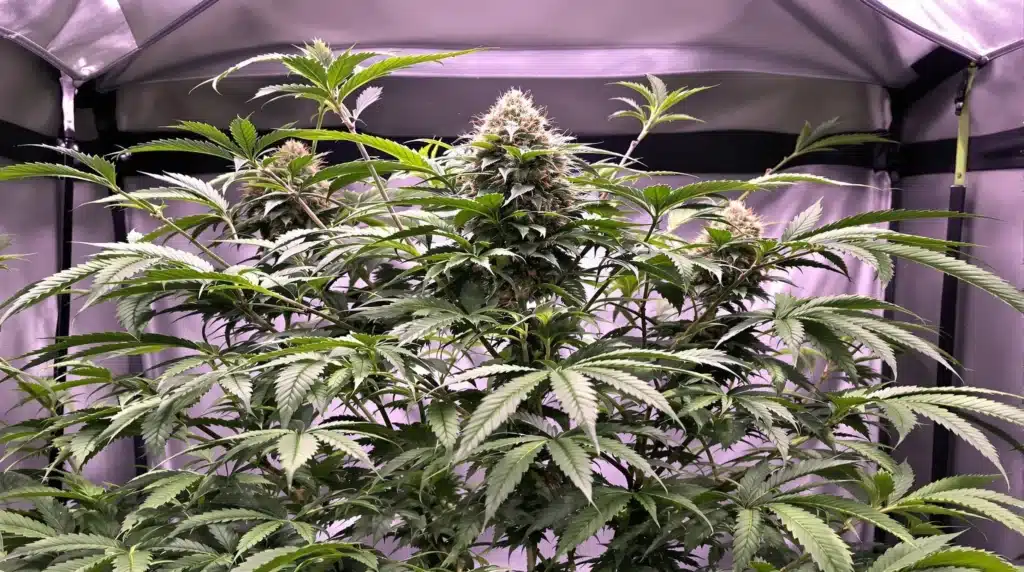
Tips for Post-LST Success
When to Retie or Adjust Training
Retie branches as needed to maintain an even canopy. Plants grow quickly after LST, so regular adjustments are crucial to prevent ties from restricting growth or cutting into stems. Monitoring the plant’s development and making timely adjustments helps ensure the training remains effective.
Retie branches as they grow and adjust the angles to encourage further development. This ongoing maintenance is key to achieving the best results with LST. By staying attentive and proactive, growers can optimize the plant’s structure and maximize yields.
Combining LST with Other Training Methods
Combine LST with techniques like topping or super cropping for enhanced results. Topping creates multiple main colas, while LST ensures even light distribution. Together, these methods can dramatically increase yields and improve the overall quality of the harvest.
Timing Your Final LST Adjustments Before Flowering
When preparing your plants for the flowering phase, timing your final LST adjustments is critical. During the last weeks of the vegetative stage, ensure that all branches are evenly spaced and properly tied down to maintain an open canopy. This preparation allows the plant to focus its energy on developing buds rather than structural adjustments. Using low stress training before flowering ensures maximum light exposure and balanced growth.
Stopping LST early in the flowering stage gives the plant ample time to recover and direct nutrients to flower production. Avoid bending or tying down branches during this phase, as the plant becomes more rigid and less flexible. Late adjustments can cause unnecessary stress, potentially reducing overall yield and quality. Proper timing with low stress training before flowering sets the stage for optimal results.
Enhancing Flower Development Post-LST
Once your plant enters the flowering phase, the groundwork laid during LST will begin to show results. Bud sites exposed to light will develop into dense, resinous flowers. To further enhance flower growth, maintain optimal environmental conditions, including proper light intensity, humidity, and nutrient levels. Low stress training ensures these conditions are fully utilized for bud production.
Using bloom-specific nutrients during this time can significantly increase the size and density of your flowers. Phosphorus and potassium-rich feeds are essential for promoting healthy bud development. Regularly inspect the canopy to ensure even light distribution and make minor adjustments if needed to prevent shading. Post low stress training care guarantees the plant’s energy is directed toward optimal flowering.
Advanced Techniques for LST
Combining LST with Topping
For growers seeking maximum yields, combining LST with topping can be a game-changer. Topping involves cutting off the plant’s main growth tip to encourage the development of multiple colas. When combined with low stress training, the resulting even canopy ensures that all colas receive equal light, leading to a significant increase in yield.
After topping, use LST to guide the new growth laterally, maintaining an open structure. This combination technique is especially effective for high-yielding strains and growers with sufficient space to accommodate lateral expansion. Applying low stress training before and after topping ensures balanced growth and improved light distribution.
Using Trellis Nets with LST
Incorporating trellis nets into your LST setup provides additional support for branches as they grow. The netting helps distribute the weight of heavy buds evenly, preventing branches from snapping under pressure. Trellis nets also help maintain an even canopy by keeping branches in place as they stretch during the flowering phase.
Place the net over your plants early in the vegetative stage, and use LST to guide branches into the desired positions. As the plant grows, continue adjusting the branches to ensure even coverage. This method is particularly useful for growers seeking to maximize yields in indoor grow tents or confined spaces. Combining trellis nets with low stress training supports heavy buds while enhancing airflow.
Combining LST with Defoliation
Defoliation complements LST by removing excess leaves that block light from reaching lower bud sites. After implementing LST, carefully trim away large fan leaves that obstruct light penetration. This not only improves light distribution but also enhances airflow, reducing the risk of mold and mildew. Using low stress training and defoliation together significantly boosts bud quality and quantity.
When combining defoliation with LST, avoid removing too many leaves at once to prevent over-stressing the plant. Gradual defoliation over the course of the vegetative phase allows the plant to adjust and recover, ensuring optimal health and productivity. This dual approach ensures the full benefits of low stress training.
Strains Suitable for Low Stress Training
San Fernando Valley Kush
San Fernando Valley Kush (SFV Kush) is an Indica-dominant strain known for its robust growth and high resin production. Its strong branches make it an excellent candidate for LST, allowing growers to train the plant into a wide, even canopy. With earthy, piney flavors and relaxing effects, SFV Kush is ideal for evening use. LST enhances its yield potential, producing dense, resinous buds that are perfect for extraction and smoking alike.
Permanent Marker Auto
Permanent Marker Auto is a hybrid autoflowering strain celebrated for its unique flavor profile and ease of cultivation. This strain’s sturdy structure responds well to LST, enabling growers to maximize light exposure and airflow. With sweet, fruity notes and a balanced high, it’s versatile for both recreational and medicinal purposes. Applying LST to Permanent Marker Auto ensures even bud development and a rewarding harvest, especially in compact grow spaces.
Maracuya Auto
Maracuya Auto, also known as Passion Fruit Auto, is a Sativa-dominant autoflower with tropical, fruity aromas. Its tall, flexible branches make it highly adaptable to LST, allowing growers to control its height while promoting lateral growth. Known for its uplifting and energetic effects, Maracuya Auto thrives under proper training, producing large, flavorful buds. LST optimizes its growth, ensuring a high-quality yield with vibrant terpene profiles.
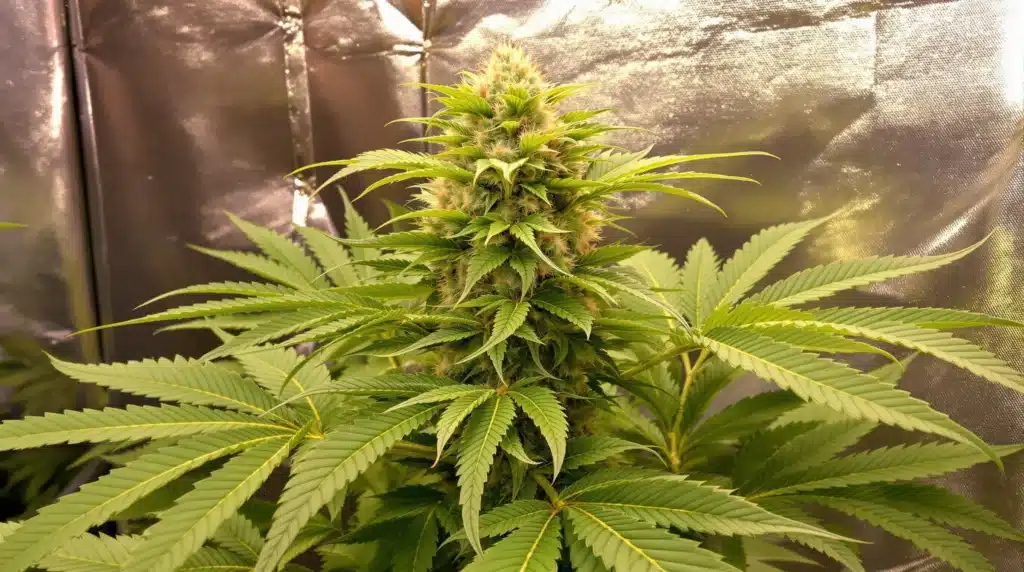
FAQs About Low Stress Training Recovery
How Long Does It Take for Plants to Recover After LST?
Plants typically recover from low stress training within 24-48 hours. During this period, monitor them closely for signs of stress, such as drooping leaves or slow growth. Healthy plants will quickly resume vigorous growth, with new shoots emerging from exposed bud sites. Ensuring proper environmental conditions during recovery accelerates this process.
Can LST Cause Long-Term Damage to Plants?
When performed correctly, LST does not cause long-term damage to plants. However, excessive bending or improper technique can lead to broken stems or restricted growth. To prevent these issues, use soft ties and apply gentle pressure when bending branches. Regularly inspect the plant to ensure ties are not cutting into stems.
What Are the Signs That LST Has Been Successful?
Successful LST results in an even canopy with multiple bud sites receiving equal light. Plants will exhibit healthy growth, with lateral branches developing into strong, productive colas. Improved light penetration and airflow contribute to larger, denser buds and a more robust plant overall.




